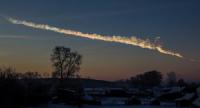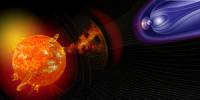-
A Seattle quake may cause more damage than expected to reinforced concrete
Using ground motions generated for a range of simulated magnitude 9 earthquakes in the Pacific Northwest, researchers are testing how well reinforced concrete walls might stand up under such seismic events. The walls may not fare so well, especially within the city of Seattle, the researchers say.
-
-
Forest fires accelerating snowmelt across western U.S., affecting water supplies
Forest fires are causing snow to melt earlier in the season, a trend occurring across the western U.S. that may affect water supplies and trigger even more fires, according to a new study. It is a cycle that will only be exacerbated as the frequency, duration, and severity of forest fires increase with a warmer and drier climate.
-
-
HBO’s “Chernobyl” exposes the horrifying scope of Soviet deception
The new five-part miniseries, premiering 6 May, examines the Chernobyl nuclear disaster—and the brave people who sacrificed their lives to reveal the shocking truth. The Chernobyl nuclear disaster was the screw-up to end all screw-ups, playing a part in more than 93,000 deaths and turning the northern Ukrainian region uninhabitable. Nick Schager writes in the Daily Beast that, as HBO’s Chernobyl reveals, even more deadly than the radiation released by the accident were the lies that caused it in the first place—and, afterwards, stymied efforts to contain and combat it.
-
-
Blinded and confused: Security vulnerabilities in “smart home” IoT devices
Researchers have identified design flaws in “smart home” Internet-of-Things (IoT) devices that allow third parties to prevent devices from sharing information. The flaws can be used to prevent security systems from signaling that there has been a break-in or uploading video of intruders.
-
-
The why, how, where, and what of earthquake early warning
Earlier this year, Los Angeles became one of the first cities in the country to roll out ShakeAlert – a dedicated earthquake early warning system. Advanced warning of an earthquake has long been a goal for everyone from seismologists to local governments. Especially in cities like Los Angeles, located along the notorious San Andreas fault. But what about cities like Seattle?
-
-
Fracking Linked to earthquakes in the Central and Eastern United States
Small earthquakes in Ohio, Pennsylvania, West Virginia, Oklahoma and Texas can be linked to hydraulic fracturing wells in those regions, according to researchers. While relatively rare compared to earthquakes caused by wastewater disposal in oil and gas fields in the central United States, the researchers have identified more than 600 small earthquakes (between magnitude 2.0 and 3.8) in these states.
-
-
“Metamaterials” may mitigate earthquake damage

In the past decade scientists have been experimenting with metamaterials, artificial materials designed with periodic internal structures to give them properties not found in natural materials. Some of these materials can control waves propagating through them, filtering sound or deflecting light so that an object appears “cloaked” or invisible, for instance. Could this same principle be applied to controlling seismic waves?
-
-
California: Coastal impacts of climate change
The United States Geological Survey (USGS) says that sea-level rise is going to wreak widespread destruction on California’s coastal communities, unless these communities take urgent action to mitigate to risks. “Even the storms today have significant risk to California’s coastline,” said Patrick Barnard, the lead author of the study. “There are about $12 billion in properties that are at risk of extreme storm today, but if you look out into the future, let’s say mid-century, those numbers roughly triple to about $30 billion of property at risk with just a little bit of sea level rise, and it goes up from there,” USGS researchers Patrick L. Barnard and colleagues write in Scientific Reports.
-
-
Nuclear weapons might save the world from an asteroid strike – but we need to change the law first
The schlocky 1998 Bruce Willis movie Armageddon was the highest grossing film of that year. The blockbuster saw a master oil driller (Willis) and an unlikely crew of misfits place a nuclear bomb inside a giant asteroid heading for Earth, blow it up – and save humanity. Armageddon isn’t exactly a documentary: it’s packed full of sci-fi nonsense. But, 20 years on, its basic plot – of using a nuclear explosion to avert a cataclysmic asteroid collision – doesn’t seem quite as silly as it did at the time.
-
-
Celestial menace: Defending Earth from asteroids

Incoming asteroids have been scarring our home planet for billions of years. This month humankind left our own mark on an asteroid for the first time: Japan’s Hayabusa2 spacecraft dropped a copper projectile at very high speed in an attempt to form a crater on asteroid Ryugu. A much bigger asteroid impact is planned for the coming decade, involving an international double-spacecraft mission.
-
-
Defending the Earth from asteroids

A mere 17-20 meters across, the Chelyabinsk meteor caused extensive ground damage and numerous injuries when it exploded on impact with Earth’s atmosphere in February 2013. To prevent another such impact, researchers use a simple yet ingenious way to spot these tiny near-Earth objects (NEOs) as they hurtle toward the planet.
-
-
There’s a massive cybersecurity job gap – we should fill it by employing hackers

Cybersecurity incidents are gaining an increasingly high profile. These attacks are becoming increasingly sophisticated, using psychological manipulation as well as technology. To face these challenges, society needs cybersecurity professionals who can protect systems and mitigate damage. There is already an active population with a strong passion for cybersecurity – hackers.
-
-
New sensors can sense and sort troublesome gases
From astronauts and submariners to miners and rescue workers, people who operate in small, enclosed spaces need good air quality to work safely and effectively. Newly developed electronic sensors can simultaneously detect at least three critical parameters that are important to monitor to ensure human comfort and safety.
-
-
Accurately predicting harmful space weather’s “killer” electrons

A new space weather model reliably predicts space storms of high-energy particles that are harmful to many satellites and spacecraft orbiting in the Earth’s outer radiation belt. The model can accurately give a one-day warning prior to a space storm of ultra-high-speed electrons, often referred to as “killer” electrons because of the damage they can do to spacecraft such as navigation, communications, and weather monitoring satellites.
-
-
New device creates electricity from snowfall
Researchers and colleagues have designed a new device that creates electricity from falling snow. The first of its kind, this device is inexpensive, small, thin and flexible like a sheet of plastic.
-
More headlines
The long view
Water Wars: A Historic Agreement Between Mexico and US Is Ramping Up Border Tension
By Natasha Lindstaedt
As climate change drives rising temperatures and changes in rainfall, Mexico and the US are in the middle of a conflict over water, putting an additional strain on their relationship. Partly due to constant droughts, Mexico has struggled to maintain its water deliveries for much of the last 25 years, deliveries to which it is obligated by a 1944 water-sharing agreement between the two countries.
Trump Is Fast-Tracking New Coal Mines — Even When They Don’t Make Economic Sense
By Katie Myers
In Appalachian Tennessee, mines shut down and couldn’t pay their debts. Now a new one is opening under the guise of an “energy emergency.”
Smaller Nuclear Reactors Spark Renewed Interest in a Once-Shunned Energy Source
By David Montgomery
In the past two years, half the states have taken action to promote nuclear power, from creating nuclear task forces to integrating nuclear into long-term energy plans.
Keeping the Lights on with Nuclear Waste: Radiochemistry Transforms Nuclear Waste into Strategic Materials
By John Domol
How UNLV radiochemistry is pioneering the future of energy in the Southwest by salvaging strategic materials from nuclear dumps –and making it safe.
Model Predicts Long-Term Effects of Nuclear Waste on Underground Disposal Systems
By Zach Winn
The simulations matched results from an underground lab experiment in Switzerland, suggesting modeling could be used to validate the safety of nuclear disposal sites.
